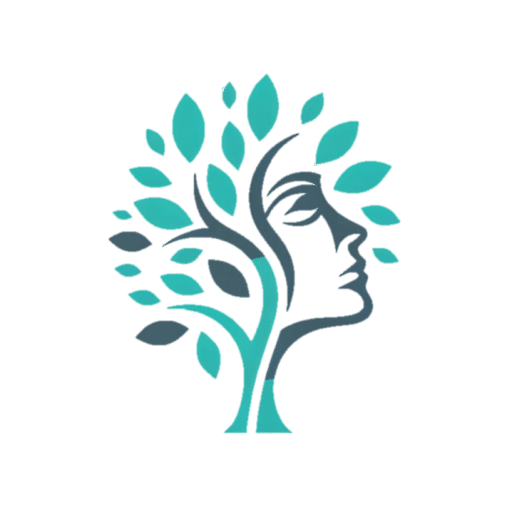Food cravings and emotional eating are common struggles that can have a negative impact on both physical and mental health. While food is a necessary part of our lives, it can also become a source of distress when our relationship with it becomes unhealthy. In such cases, therapy can be a valuable tool in helping individuals develop a healthier relationship with food. In this article, we will outline the structure of food cravings and emotional eating, explore common approaches to addressing these challenges in therapy and provide tips for developing healthy habits for long-term success.
What is on this page
What are food cravings
Food cravings refer to intense desires for specific foods, often high in sugar, salt, or fat. Emotional eating, on the other hand, refers to the use of food as a means of coping with negative emotions, such as stress, boredom, or sadness. Both food cravings and emotional eating are common experiences and can have a significant impact on overall health and well-being.
Prevalence of food cravings and emotional eating is widespread, with approximately 75% of individuals reporting experiencing food cravings at some point in their lives and about 40% of adults reporting that they eat in response to emotional stress. Addressing food cravings and emotional eating in therapy is important because these habits can lead to negative physical and mental health consequences, such as weight gain, body dissatisfaction, and decreased self-esteem. Through therapy, individuals can develop a healthier relationship with food, learn to manage their emotions in healthier ways, and adopt healthier habits for long-term success.

Understanding Food Cravings
Food cravings can be divided into two types: physical and emotional. Physical cravings are often driven by changes in hormones or nutrient deficiencies, while emotional cravings are typically triggered by stress, boredom, or other negative emotions.
Common triggers for food cravings include stress, fatigue, hormonal changes, and boredom. For example, cortisol, a stress hormone, has been shown to increase food cravings for high-calorie, high-fat foods. Additionally, research has shown that individuals who are sleep-deprived are more likely to experience food cravings for high-fat, high-sugar foods.
Common types of food cravings include cravings for sweets, salty foods, and fatty foods. These cravings are often driven by a desire for energy or comfort. For example, sugar cravings can be driven by a desire for quick energy, while cravings for fatty foods may be driven by a desire for comfort or stress relief.
Understanding Emotional Eating
Emotional eating refers to the use of food as a way of coping with negative emotions, such as stress, boredom, or sadness. This behaviour can lead to overeating, weight gain, and a negative self-image.
Triggers for emotional eating can vary, but common triggers include stress, boredom, anger, sadness, and anxiety. Research has shown that individuals who experience high levels of stress are more likely to engage in emotional eating behaviours.
Consequences of emotional eating can include weight gain, decreased self-esteem, and body dissatisfaction. Additionally, emotional eating can lead to feelings of guilt and shame, which can exacerbate negative emotions and create a cycle of unhealthy eating behaviour.
How do I Know if I am Emotionally Eating?
Emotional eating can be a subtle and insidious experience, creeping into our lives without us even realizing it. However, there are some signs that can indicate when we are using food to cope with our emotions. Some of these signs include eating when we are not hungry, using food as a form of comfort or distraction, binge eating or overeating, feeling guilt or shame after eating, and using food to numb or avoid difficult emotions. It’s important to remember that emotional eating is a common experience and that it can be overcome with the right support and tools. By paying attention to our relationship with food, examining our emotions and habits, and seeking help when needed, we can break free from the cycle of emotional eating and cultivate a healthier, more fulfilling relationship with food.
Approaches to Overcoming Food Cravings and Emotional Eating in Therapy
There are multiple approaches that can be used in therapy to help individuals overcome food cravings and emotional eating. These approaches include integrative therapy, mindfulness-based techniques, cognitive-behavioural therapy (CBT), interpersonal therapy (IPT), and nutritional therapy.
Mindfulness-based techniques involve learning to be present at the moment and to pay attention to physical sensations and thoughts without judgment. This approach can help individuals better understand the motivations behind their food cravings and emotional eating and develop healthier habits.

Cognitive-behavioural therapy (CBT) is an evidence-based approach that helps individuals identify and alter negative thought patterns and behaviours related to food cravings and emotional eating. CBT can be effective in helping individuals develop healthier coping strategies and improve their self-esteem.
Interpersonal therapy (IPT) focuses on improving relationships and communication skills and can be helpful in addressing the social and interpersonal factors that may contribute to food cravings and emotional eating. IPT can help individuals develop healthier relationships and communication styles, leading to a more positive relationship with food.
Nutritional therapy can also be beneficial in addressing food cravings and emotional eating. A registered dietitian can help individuals understand the nutritional needs of their body, develop a healthy eating plan, and learn how to nourish their bodies without relying on food for comfort.
Developing Healthy Habits for Long-Term Success
Developing healthy habits is an essential part of overcoming food cravings and emotional eating. These habits can include creating a supportive environment, establishing healthy routines, incorporating physical activity, and seeking social support.
Creating a supportive environment involves creating a positive and non-judgmental atmosphere around food and body image. This can include reducing exposure to media and advertising that promote unrealistic body standards and focusing on self-care and self-compassion.
Establishing healthy routines, such as regular meal times and physical activity, can help individuals develop a healthy relationship with food and reduce the risk of overeating or emotional eating.
Incorporating physical activity, such as exercise or yoga, can help individuals manage stress, improve mood, and increase feelings of self-esteem and body satisfaction.
Finally, seeking social support from friends, family, or a therapist can be an important component of overcoming food cravings and emotional eating. Talking about experiences and challenges with others can help individuals feel understood and supported, leading to a more positive relationship with food and a healthier lifestyle.
Food cravings and emotional eating are common experiences that can have a significant impact on overall health and well-being. Through therapy, individuals can develop a healthier relationship with food, learn to manage their emotions in healthier ways, and adopt healthy habits for long-term success.
By understanding the structure of food cravings and emotional eating, exploring common approaches to addressing these challenges in therapy, and developing healthy habits, individuals can work towards more positive and healthy relations


